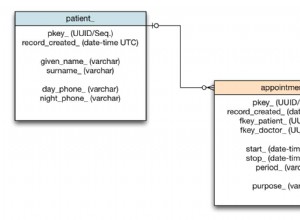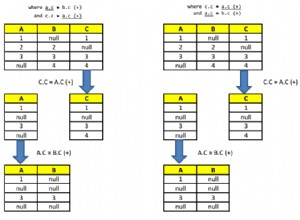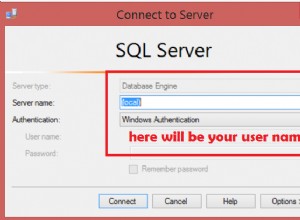Ich habe die Lösung erstellt.
SQL Server Compact Edition besteht aus 7 DLLs:
sqlceme40.dllDie undokumentierte, native, flache API-Bibliothek (The .netSystem.Data.SqlServerCe.dllAssembly ist ein Wrapper um diese DLL)sqlceca40.dllEine COM-DLL, dieEngineimplementiert ,Replication,Errorund einige andere COM-Objektesqlceoledb40.dllEine COM-DLL, die einen OLEdb-Anbieter für SSCE implementiert (die die Verwendung von ADO ermöglicht)sqlcese40.dllunbekanntsqlceqp40.dllunbekanntsqlcecompact40.dllunbekanntsqlceer40en.dllunbekannt
Das Problem beim Versuch, diese DLLs einfach zu versenden, besteht darin, dass zwei von ihnen COM sind Objekte. COM-Objekt-DLLs müssen registriert werden , z. B.:
>regsvr32 sqlceca40.dll
>regsvr32 sqlceoledb40.dll
Das Problem besteht darin, dass die Registrierung eines COM-Objekts administrativ erfordert Privilegien (Verwendung einer globalen Lösung zur Lösung eines lokalen Problems ). Das bedeutet, dass Ihre Benutzer
- müssen installieren Ihre Bewerbung (was Sie nicht wollen)
- verlangt von Ihren Benutzern administrative Berechtigungen (was Sie nicht möchten)
Glücklicherweise löste Microsoft ab 2001 mit Windows XP dieses allgemeine Problem: Kostenlose COM .
Zunächst erklären Sie, dass Ihre Anwendung eine "Abhängigkeit" hat auf SQL Server Compact Edition 4.0. Dazu erstellen Sie ein Assemblymanifest:
<?xml version="1.0" encoding="UTF-8" standalone="yes"?>
<assembly xmlns="urn:schemas-microsoft-com:asm.v1" manifestVersion="1.0">
<assemblyIdentity
version="1.0.0.0"
processorArchitecture="X86"
name="client"
type="win32"
/>
<description>Hyperion Pro</description>
<!-- We have a dependancy on SQL Server CE 4.0 -->
<dependency>
<dependentAssembly>
<assemblyIdentity
type="win32"
name="Microsoft.SQLSERVER.CE.4.0"
version="4.0.0.0" processorArchitecture="x86"
/>
</dependentAssembly>
</dependency>
<!-- We are high-dpi aware on Windows Vista -->
<asmv3:application xmlns:asmv3="urn:schemas-microsoft-com:asm.v3">
<asmv3:windowsSettings
xmlns="http://schemas.microsoft.com/SMI/2005/WindowsSettings">
<dpiAware>true</dpiAware>
</asmv3:windowsSettings>
</asmv3:application>
<!-- We were designed and tested on Windows 7 -->
<compatibility xmlns="urn:schemas-microsoft-com:compatibility.v1">
<application>
<!--The ID below indicates application support for Windows 7 -->
<supportedOS Id="{35138b9a-5d96-4fbd-8e2d-a2440225f93a}"/>
<!--The ID below indicates application support for Windows Vista -->
<!--supportedOS Id="{e2011457-1546-43c5-a5fe-008deee3d3f0}"/-->
</application>
</compatibility>
<!-- Disable file and registry virtualization -->
<trustInfo xmlns="urn:schemas-microsoft-com:asm.v2">
<security>
<requestedPrivileges>
<requestedExecutionLevel level="asInvoker" uiAccess="false"/>
</requestedPrivileges>
</security>
</trustInfo>
</assembly>
Sie können diese Datei neben platzieren Ihre ausführbare Datei (als Hyperion.exe.manifest ), oder Sie können es als RT_MANIFEST in Ihre Anwendung einbauen Ressource.
Beachten Sie, dass wir eine Abhängigkeit von einer Assembly namens Microsoft.SQLSERVER.CE.4.0 haben . Wir erstellen diese Assembly zuerst, indem wir ein Verzeichnis erstellen aufgerufen:
Wenn Sie Ihre Anwendung bereitstellen, platzieren Sie alle 7 DLLs, aus denen diese "Assembly" besteht in dieses Microsoft.SQLSERVER.CE.4.0 Unterordner, zusammen mit einem speziellen .manifest Datei:
📁C:\
╰──📁Users
╰──📁Ian
╰──📁AppData
╰──📁Local
╰──📁Hyperion Pro
├──📄Hyperion.exe
├──📄Hyperion.exe.manifest
╰──📁Microsoft.SQLSERVER.CE.4.0
├──📄sqlceme40.dll
├──📄sqlceca40.dll
├──📄sqlceoledb40.dll
├──📄sqlcese40.dll
├──📄sqlceqp40.dll
├──📄sqlcecompact40.dll
├──📄sqlceer40en.dll
╰──📄Microsoft.SQLSERVER.CE.4.0.manifest
Mit anderen Worten, der Anwendungsordner enthält Ihre Anwendung und die Datei Microsoft.SQLSERVER.CE.4.0 Ordner:
Directory of C:\Users\Ian\AppData\Local\Hyperion Pro
05/29/2012 09:23 AM 1,899,008 Hyperion.exe
05/28/2012 01:46 PM 1,587 Hyperion.exe.manifest
05/29/2012 09:27 AM <DIR> Microsoft.SQLSERVER.CE.4.0
2 File(s) 1,900,675 bytes
1 Dir(s) 20,851,503,104 bytes free
Der nächste Teil Ihrer Aufgabe besteht darin, das Microsoft.SQLSERVER.CE.4.0.manifest zu definieren Datei. Registrierungsfreies COM ermöglicht es einer Manifestdatei, alle COM-Objekte und ihre Clsids zu deklarieren. Dies erforderte viel Reverse Engineering. Das Assemblymanifest für SQL Server Compact Edition 4.0 lautet jedoch:
Microsoft.SQLSERVER.CE.4.0.manifest :
<?xml version="1.0" encoding="UTF-8" standalone="yes"?>
<assembly xmlns="urn:schemas-microsoft-com:asm.v1" manifestVersion="1.0">
<assemblyIdentity
type="win32"
name="Microsoft.SQLSERVER.CE.4.0"
processorArchitecture="x86"
version="4.0.0.0" />
<!-- OLEDB Provider -->
<file name = "sqlceoledb40.dll">
<comClass
description = "Microsoft SQL Server Compact OLE DB Provider for Windows"
clsid="{2006C53A-C915-41EA-BAA9-9EAB3A1FBF97}"
threadingModel = "Both"
progid = "Microsoft.SQLSERVER.CE.OLEDB.4.0" />
</file>
<!-- Native flat engine library -->
<file name="sqlceme40.dll" />
<!-- Engine and Replication COM object -->
<file name="sqlceca40.dll">
<comClass description="Active SSCE Engine Object"
clsid="{68D45319-3702-4837-9F8E-DA6845D82482}"
threadingModel="Both"
progid="SSCE.Engine.4.0" />
<comClass description="SSCE Error Object"
clsid="{36228F21-B5C7-4054-8DC2-47D3E236E8B5}"
threadingModel="Both"
progid="SSCE.Error.4.0" />
<comClass description="SSCE Param Object"
clsid="{0B3A7B75-A9B0-4580-9AA5-1A7DA47AD1CB}"
threadingModel="Both"
progid="SSCE.Param.4.0" />
<comClass description="Active SSCE Replication Object"
clsid="{11D5B2D4-26A4-44F5-A48B-0FAC3A919ED8}"
threadingModel="Both"
progid="SSCE.Replication.4.0" />
<comClass description="Active SSCE remote data access Object"
clsid="{58BC9AD6-BF11-40B3-9AB1-E3F2ED784C08}"
threadingModel="Both"
progid="SSCE.RemoteDataAccess.4.0" />
<typelib tlbid="{CE4AACFA-3CFD-4028-B2D9-F272314F07C8}"
version="4.0"
helpdir=""/>
</file>
<comInterfaceExternalProxyStub
name="ISSCEEngine"
iid="{10EC3E45-0870-4D7B-9A2D-F4F81B6B7FA2}"
proxyStubClsid32="{00020424-0000-0000-C000-000000000046}"
baseInterface="{00000000-0000-0000-C000-000000000046}"
tlbid = "{CE4AACFA-3CFD-4028-B2D9-F272314F07C8}" />
<comInterfaceExternalProxyStub
name="ISSCEError"
iid="{31155A3B-871D-407F-9F73-DEBFAC7EFBE3}"
proxyStubClsid32="{00020424-0000-0000-C000-000000000046}"
baseInterface="{00000000-0000-0000-C000-000000000046}"
tlbid = "{CE4AACFA-3CFD-4028-B2D9-F272314F07C8}" />
<comInterfaceExternalProxyStub
name="ISSCERDA"
iid="{4F04F79D-1FF1-4DCD-802B-3D51B9356C14}"
proxyStubClsid32="{00020424-0000-0000-C000-000000000046}"
baseInterface="{00000000-0000-0000-C000-000000000046}"
tlbid = "{CE4AACFA-3CFD-4028-B2D9-F272314F07C8}" />
<comInterfaceExternalProxyStub
name="ISSCEParams"
iid="{A78AFF90-049C-41EC-B1D8-665968AAC4A6}"
proxyStubClsid32="{00020424-0000-0000-C000-000000000046}"
baseInterface="{00000000-0000-0000-C000-000000000046}"
tlbid = "{CE4AACFA-3CFD-4028-B2D9-F272314F07C8}" />
<comInterfaceExternalProxyStub
name="ISSCEParam"
iid="{A9876C60-2667-44E5-89DB-E9A46ED392C0}"
proxyStubClsid32="{00020424-0000-0000-C000-000000000046}"
baseInterface="{00000000-0000-0000-C000-000000000046}"
tlbid = "{CE4AACFA-3CFD-4028-B2D9-F272314F07C8}" />
<comInterfaceExternalProxyStub
name="ISSCEErrors"
iid="{C40143CA-E9F9-4FF4-B8B4-CC02C064FC1B}"
proxyStubClsid32="{00020424-0000-0000-C000-000000000046}"
baseInterface="{00000000-0000-0000-C000-000000000046}"
tlbid = "{CE4AACFA-3CFD-4028-B2D9-F272314F07C8}" />
<comInterfaceExternalProxyStub
name="ISSCEMerge"
iid="{C6EB397F-D585-428D-A4F4-454A1842CB47}"
proxyStubClsid32="{00020424-0000-0000-C000-000000000046}"
baseInterface="{00000000-0000-0000-C000-000000000046}"
tlbid = "{CE4AACFA-3CFD-4028-B2D9-F272314F07C8}" />
<file name="sqlceqp40.dll" />
<file name="sqlcese40.dll" />
<file name="sqlcecompact40.dll" />
<file name="sqlceer40EN.dll" />
</assembly>
Das letzte Problem ist, dass wir auf die gleiche Weise eine Abhängigkeit von einer Assembly namens Microsoft.SQLSERVER.CE.4.0 haben , hat SQL Server Compact Edition 4.0 wiederum eine Abhängigkeit von einer Assembly namens Microsoft.VC90.CRT . Glücklicherweise wird Ihre Installation von SQLCE mit einer Kopie dieser Assembly ausgeliefert:
📁Microsoft.VC90.CRT
├──📄Microsoft.VC90.CRT.manifest
╰──📄msvcr90.dll
Das heißt, die endgültige Verzeichnisstruktur ist:
📁C:\
╰──📁Users
╰──📁Ian
╰──📁AppData
╰──📁Local
╰──📁Hyperion Pro
├──📄Hyperion.exe
├──📄Hyperion.exe.manifest
╰──📁Microsoft.SQLSERVER.CE.4.0
├──📄Microsoft.SQLSERVER.CE.4.0.manifest
├──📄sqlceme40.dll
├──📄sqlceca40.dll
├──📄sqlceoledb40.dll
├──📄sqlcese40.dll
├──📄sqlceqp40.dll
├──📄sqlcecompact40.dll
├──📄sqlceer40en.dll
╰──📁Microsoft.VC90.CRT
├──📄Microsoft.VC90.CRT.manifest
╰──📄msvcr90.dll




